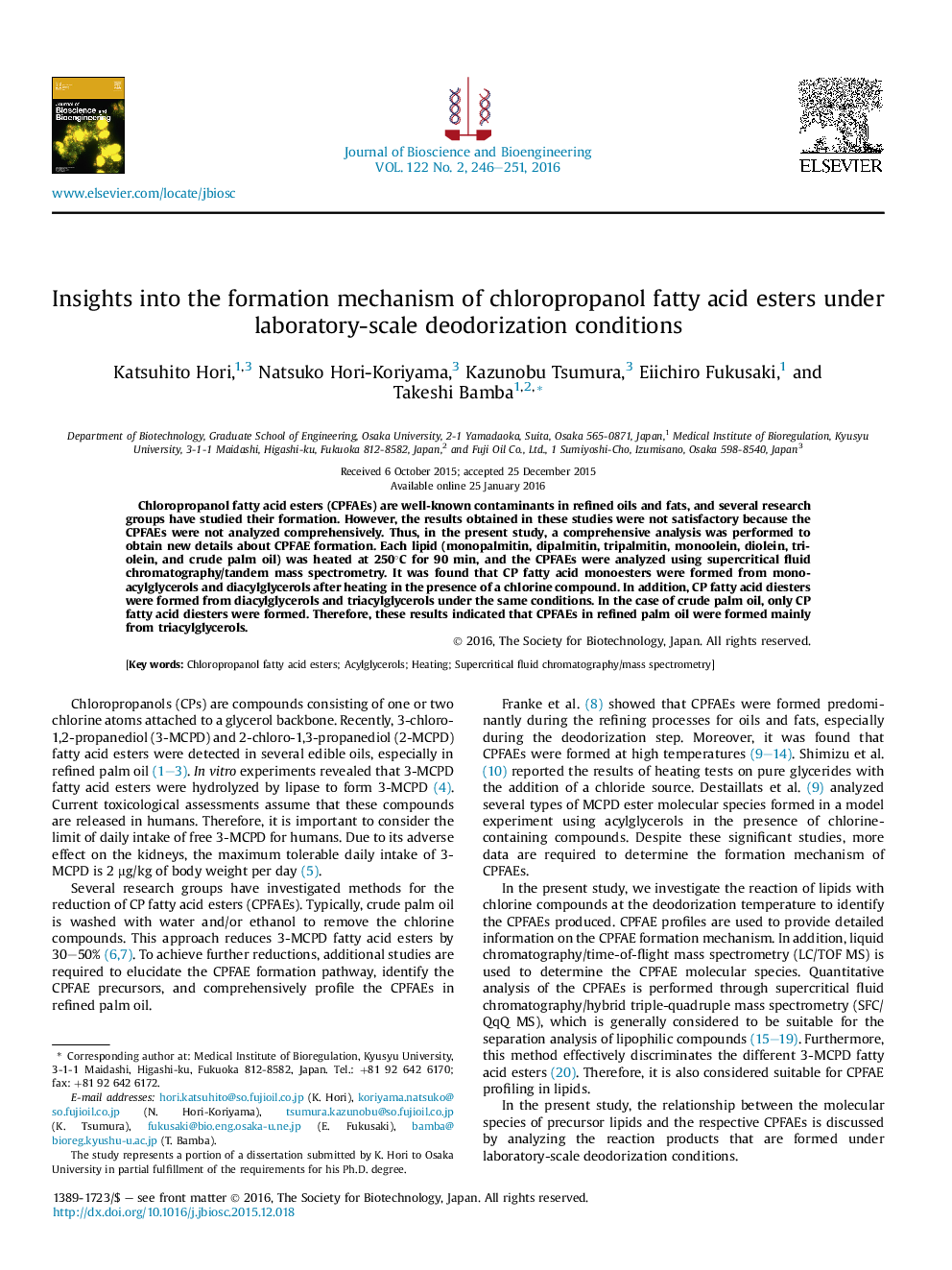| Article ID | Journal | Published Year | Pages | File Type |
|---|---|---|---|---|
| 20008 | Journal of Bioscience and Bioengineering | 2016 | 6 Pages |
•The profiling of CPFAEs was performed using samples prepared under the laboratory scale deodorization conditions.•As a result of this study, CPFAEs were mainly derived from triacylglycerols and inherent chlorine compounds in palm oil.•It was thought that the knowledge of CPFAEs formation obtained in this study was helpful for the studies about the mitigation of CPFAEs in refined palm oil.
Chloropropanol fatty acid esters (CPFAEs) are well-known contaminants in refined oils and fats, and several research groups have studied their formation. However, the results obtained in these studies were not satisfactory because the CPFAEs were not analyzed comprehensively. Thus, in the present study, a comprehensive analysis was performed to obtain new details about CPFAE formation. Each lipid (monopalmitin, dipalmitin, tripalmitin, monoolein, diolein, triolein, and crude palm oil) was heated at 250°C for 90 min, and the CPFAEs were analyzed using supercritical fluid chromatography/tandem mass spectrometry. It was found that CP fatty acid monoesters were formed from monoacylglycerols and diacylglycerols after heating in the presence of a chlorine compound. In addition, CP fatty acid diesters were formed from diacylglycerols and triacylglycerols under the same conditions. In the case of crude palm oil, only CP fatty acid diesters were formed. Therefore, these results indicated that CPFAEs in refined palm oil were formed mainly from triacylglycerols.
